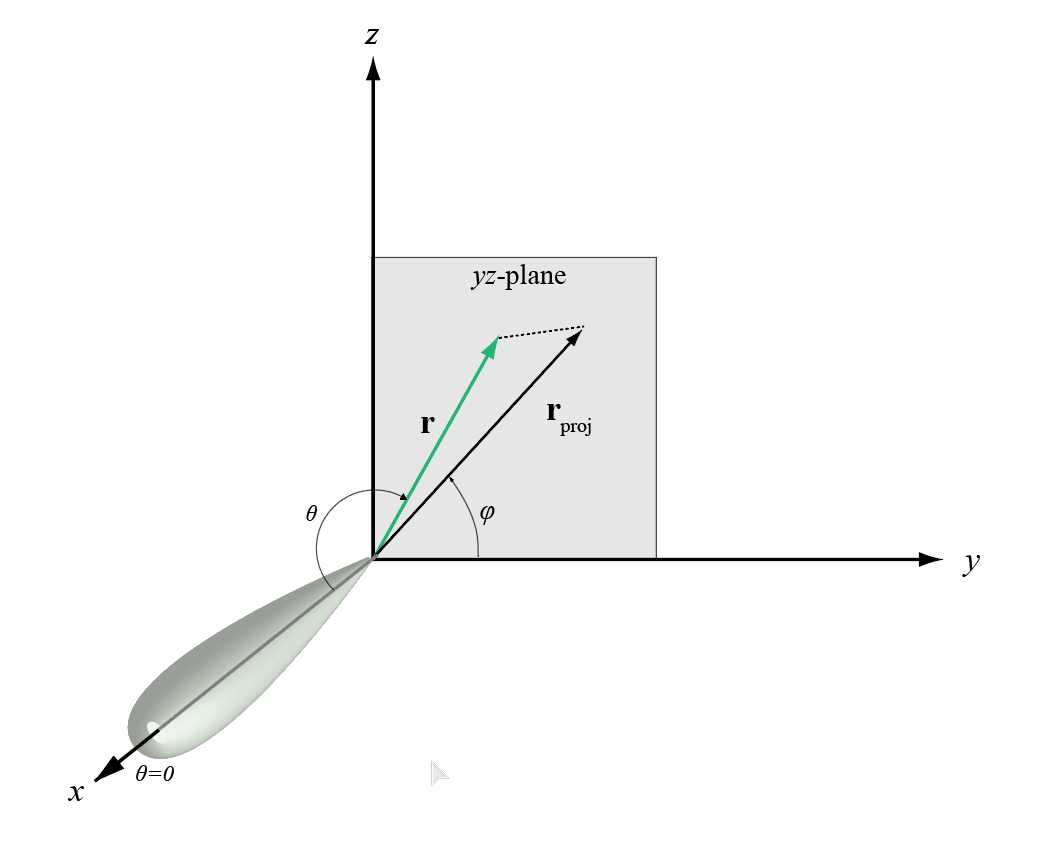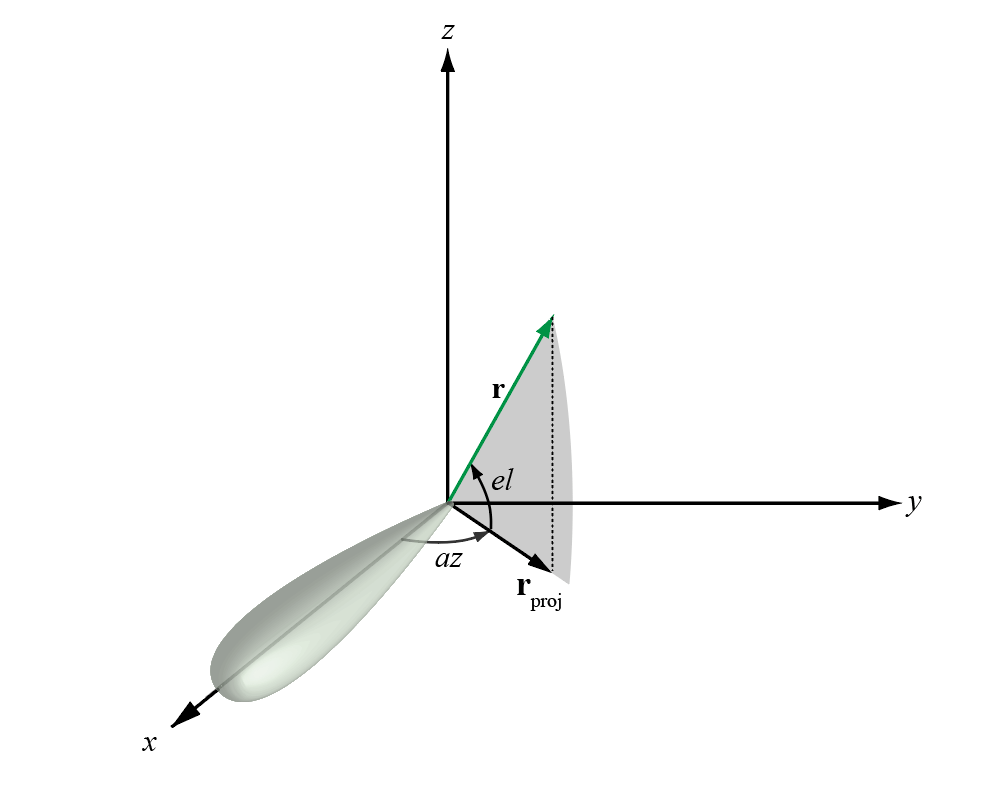uv2azelpat
Convert radiation pattern from u/v form to azimuth/elevation form
Syntax
Description
pat_azel = uv2azelpat(pat_uv,u,v)pat_azel in azimuth/elevation
angle coordinates instead of u/v space coordinates. pat_uv samples
the pattern at u angles in u and v angles
in v. The pat_azel matrix
uses a default grid that covers azimuth values from –90 to
90 degrees and elevation values from –90 to 90 degrees. In
this grid, pat_azel is uniformly sampled with
a step size of 1 for azimuth and elevation. The function interpolates
to estimate the response of the antenna at a given direction.
Examples
Input Arguments
Output Arguments
More About
Extended Capabilities
Version History
Introduced in R2012a



